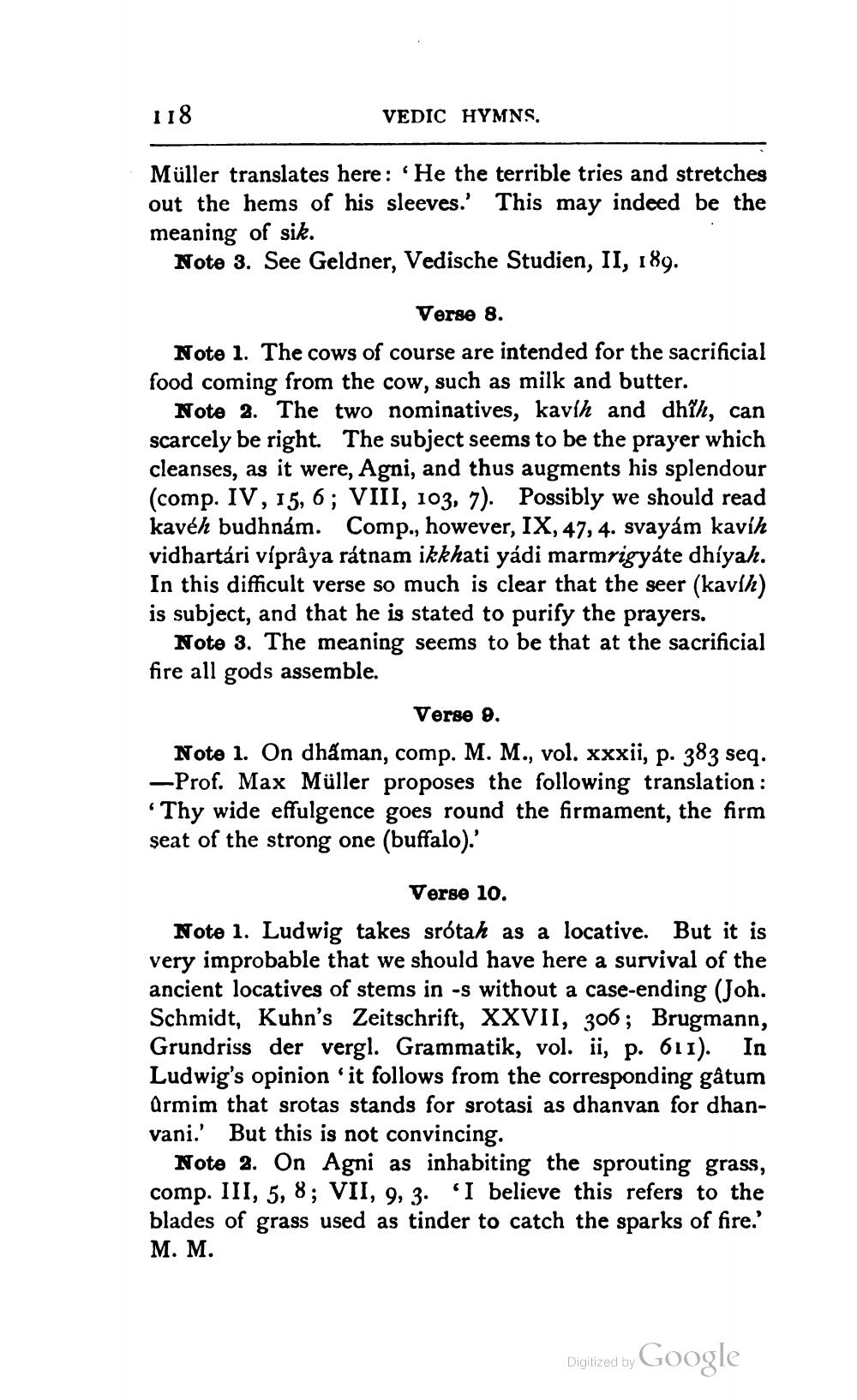________________
118
VEDIC HYMNS.
Müller translates here: 'He the terrible tries and stretches out the hems of his sleeves.' This may indeed be the meaning of sik.
Note 3. See Geldner, Vedische Studien, II, 189.
Verse 8. Note 1. The cows of course are intended for the sacrificial food coming from the cow, such as milk and butter.
Note 2. The two nominatives, kavih and dhih, can scarcely be right. The subject seems to be the prayer which cleanses, as it were, Agni, and thus augments his splendour (comp. IV, 15, 6; VIII, 103, 7). Possibly we should read kavéh budhnám. Comp., however, IX, 47, 4. svayám kavih vidhartári viprâya rátnam ikkhati yádi marmrigyáte dhiyah. In this difficult verse so much is clear that the seer (kavih) is subject, and that he is stated to purify the prayers.
Note 3. The meaning seems to be that at the sacrificial fire all gods assemble.
Verse 9.
Note 1. On dhaman, comp. M. M., vol. xxxii, p. 383 seq. -Prof. Max Müller proposes the following translation: 'Thy wide effulgence goes round the firmament, the firm seat of the strong one (buffalo).'
Verse 10. Note 1. Ludwig takes srótah as a locative. But it is very improbable that we should have here a survival of the ancient locatives of stems in -s without a case-ending (Joh. Schmidt, Kuhn's Zeitschrift, XXVII, 306; Brugmann, Grundriss der vergl. Grammatik, vol. ii, p. 611). In Ludwig's opinion 'it follows from the corresponding gâtum armim that srotas stands for srotasi as dhanvan for dhanvani.' But this is not convincing.
Note 2. On Agni as inhabiting the sprouting grass, comp. III, 5, 8; VII, 9, 3. 'I believe this refers to the blades of grass used as tinder to catch the sparks of fire.' M. M.
Digitized by Google




